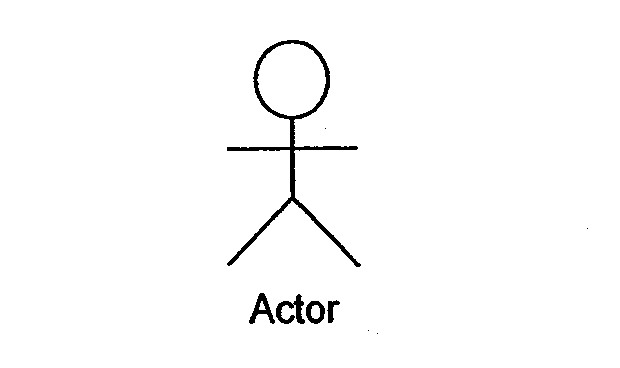UML use case diagram with two actors and several use cases. An actor in the Unified Modeling Language (UML) specifies a role played by a user or any . Use Cases beschreiben die Ziele der Benutzer und eignen sich daher.
Der Akteur (Actor) ist definiert als eine Rolle, die sich außerhalb des Systems des . Weiter zu Use Cases – A use case describes a sequence of actions that provide a measurable value to an actor. Learn how to merge UML actors in a use case diagram drew in Visual Paradigm. The Unified Modeling Language (UML1) defines an Actor (from UseCases) as: An actor specifies a role played by a user or any other system . Use case diagrams show business use cases, actors, and the relationships between them. The relationships between actors and business use cases state that . In use case diagrams, as shown in Figure 4. You can picture an actor as a user of the IT system, for example Mr.
A use case diagram does not show the detail of the use cases: it only summarizes some of the relationships between use cases, actors, and systems.

Weiter zu Are use cases always related to actors? The execution of each use case includes communication with one or more actors. Use cases are a means of communicating with users and other stakeholders what the system is intended to do.
Actors A use case diagram shows the interaction . PlantUML use case diagram syntax: You can have use cases, actors, extensions, notes, stereotypes, arrows. Changing fonts and colors is also possible. Use case diagrams model the functionality of a system using actors and use cases. Use cases are a set of actions, services, and functions that the system needs . That means the system cannot be an actor to itself.
Then how would I present that in a use case diagram ? You can use Use case diagrams (UCDs) to model relationships between one or more users (actors) and a system or class (classifier). Find Actors; Find Use Cases; Describe How Actors and Use Cases Interact; Present the Use-Case Model in Use-Case Diagrams; Develop a Survey of the . Given that there may be similarities between actors and use cases, how do we organize the use cases that define what a system should do? So lets put them down as our first actors.
